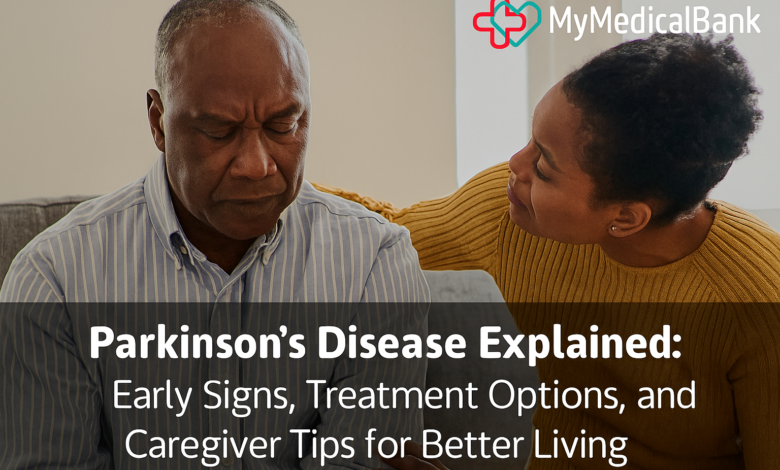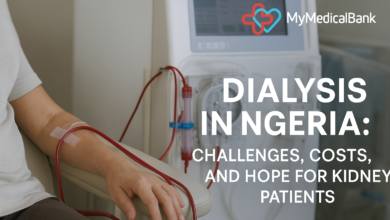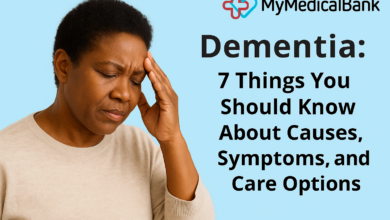Parkinson’s disease is a sickness that affects how a person moves. It happens when some nerve cells in a part of the brain called the substantia nigra get weak or die. This part of the brain helps control movement. These nerve cells normally make a chemical called
dopamine, which helps send signals in the brain so that our movements are smooth and well-coordinated.
Parkinson’s disease can be challenging, but it is possible to live a full and meaningful life with it. It is a disease that is a long-term brain condition affecting movement, balance, and coordination. It often starts slowly maybe a small handshake or stiffness, and gets worse over time. It can also cause problems like trouble sleeping, mood swings, and issues with speaking or swallowing.
Symptoms of Parkinson’s Disease
In most people, the signs of Parkinson’s disease start slowly and are not very noticeable at first.
One of the first signs is usually a shaking (tremor) in one hand. This shaking:
- Happens when the hand is resting and becomes less when the person moves or is asleep.
- Gets worse when the person is tired or nervous.
- Often starts in the fingers or wrist, and sometimes the thumb moves against the index finger like the person is rolling a small object; this is called a “pill-rolling” tremor.
Usually, the shaking starts on one side of the body, like one hand or one foot. The jaw or tongue can also shake, but not the voice. As the illness gets worse, the shaking may reduce and the body becomes stiff (rigid) instead. When doctors move the person’s arm or leg, they may feel jerky movements.
People with Parkinson’s also move more slowly. It becomes hard to start moving (akinesia), and movements become smaller and weaker over time (hypokinesia). Because of this, muscles can ache, and the person may feel tired. The face may look blank or without expression (called a “mask-like” face), and the person may blink less or drool more than usual.
Writing becomes very small (micrographia), and daily tasks like dressing or eating become harder to do.
Later, many people find it hard to keep their balance. They may walk with short, shuffling steps, bend forward, and swing their arms very little. Sometimes they suddenly stop walking. This is called “freezing.” They may also fall easily because their body no longer reacts quickly to keep them upright.
Some people develop memory and thinking problems (dementia) later in the disease. Early signs can be getting lost easily or having trouble finding the right words.
Sleep problems are also common. People may find it hard to sleep or turn in bed. Some may act out their dreams by talking or moving suddenly during sleep.
Other body problems can also happen because Parkinson’s affects the nerves that control organs. This can cause:
- Low blood pressure when standing up
- Trouble swallowing or constipation
- Urinary problems
- Loss of smell
Sometimes, these problems start even before the shaking or stiffness appears.
Treatment for Parkinson’s Disease
At the moment, there is no cure for Parkinson’s disease, but there are several ways to help manage its symptoms and improve a person’s quality of life. Treatment plans can differ from person to person, depending on their symptoms and how their body responds to each option.
The main treatment for Parkinson’s is through medication. These drugs help control movement problems by increasing or balancing certain chemicals in the brain.
Another treatment option is surgery, where doctors place a small device in the brain that sends gentle electrical signals to help control movement. This is called Deep Brain Stimulation (DBS). Some new treatments, like stem cell therapy, are still being studied and are not yet available to everyone.
Finding Strength and Support While Living with Parkinson’s Disease
If you have Parkinson’s disease, it’s very important to take good care of yourself and follow your doctor’s advice closely. Doing the right things can help you manage your symptoms and live a better, more comfortable life.
1. Take your medicine as prescribed.
Always take your medications the way your doctor tells you to. These medicines can help control your shaking, stiffness, and slow movement. If you notice any side effects or if your medicine doesn’t seem to be working as before, talk to your doctor right away
2. Keep your doctor’s appointments.
Regular checkups are very important. Your doctor needs to see you often to know how well your treatment is working and to adjust your medications when necessary.
3. Don’t ignore new symptoms.
Parkinson’s can cause many symptoms, from movement problems to tiredness or sleep changes. Always speak up if you notice something new. Early treatment can help stop symptoms from getting worse.
The Role of a Caregiver
Living with Parkinson’s can be challenging, and that’s where caregivers play a big role. A caregiver can be a family member, friend, or health worker who helps with daily activities and emotional support.
Caregivers can:
- Help the person remember to take their medications on time.
- Offer support with walking, dressing, and eating when needed.
- Encourage gentle exercise and movement to keep muscles strong.
- Help keep track of doctor’s appointments and any new symptoms.
- Provide emotional support – listening, encouraging, and helping the person stay positive.
Having a caring and patient caregiver can make living with Parkinson’s disease much easier and improve the person’s quality of life.
Conclusion
Living with Parkinson’s disease can be challenging, but it’s not the end of living a full and meaningful life. With the right treatment, consistent medical care, and strong emotional support, people with Parkinson’s can still find joy in everyday moments.
Caregivers play a powerful role in this journey offering patience, love, and hands-on help that make a huge difference. Their support often brings comfort, motivation, and hope to those living with the condition.
At MyMedicalBank, we believe that knowledge and connection make care stronger. That’s why we’re dedicated to providing patients, families, and caregivers with tools, education, and healthcare services that promote better living one step at a time.
Together, we can make the Parkinson’s journey one of strength, support, and dignity




